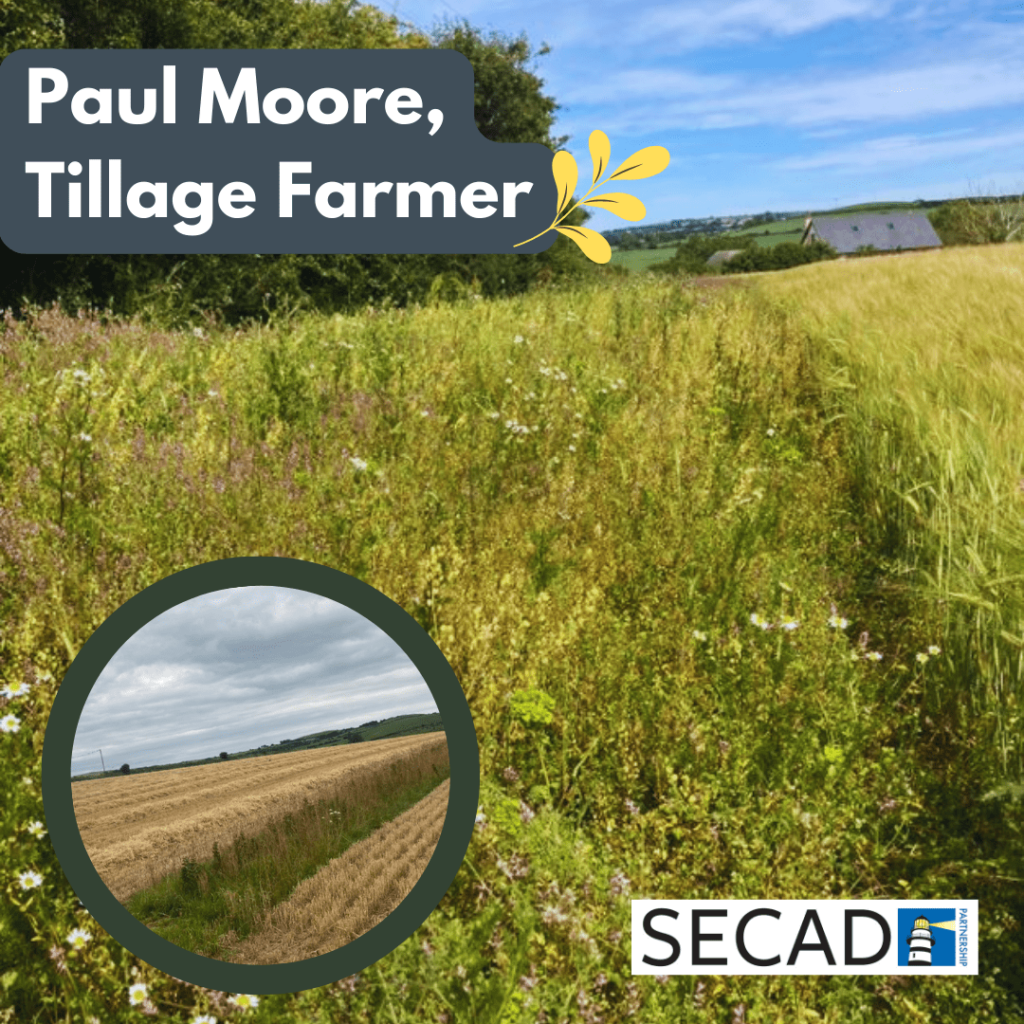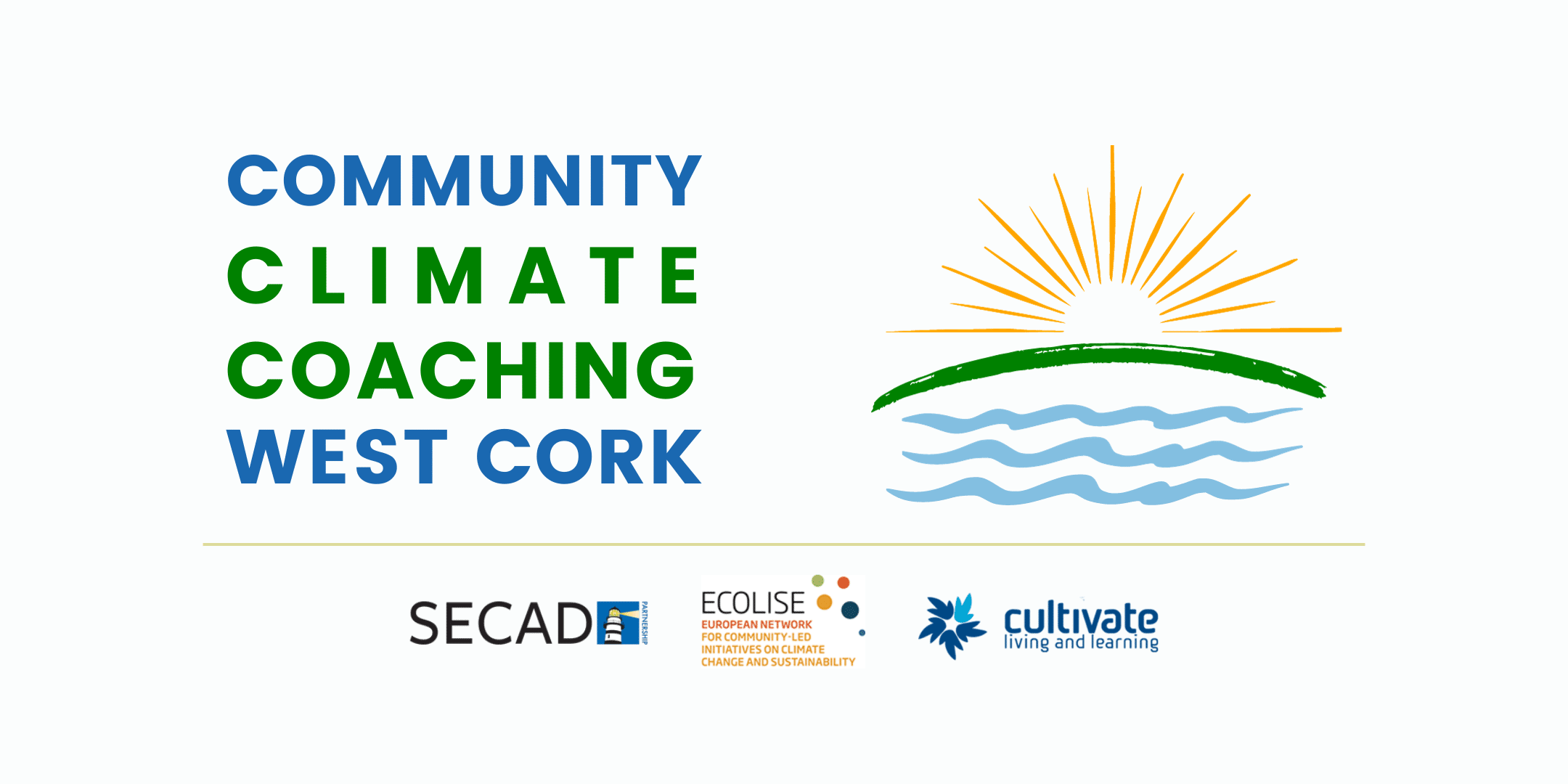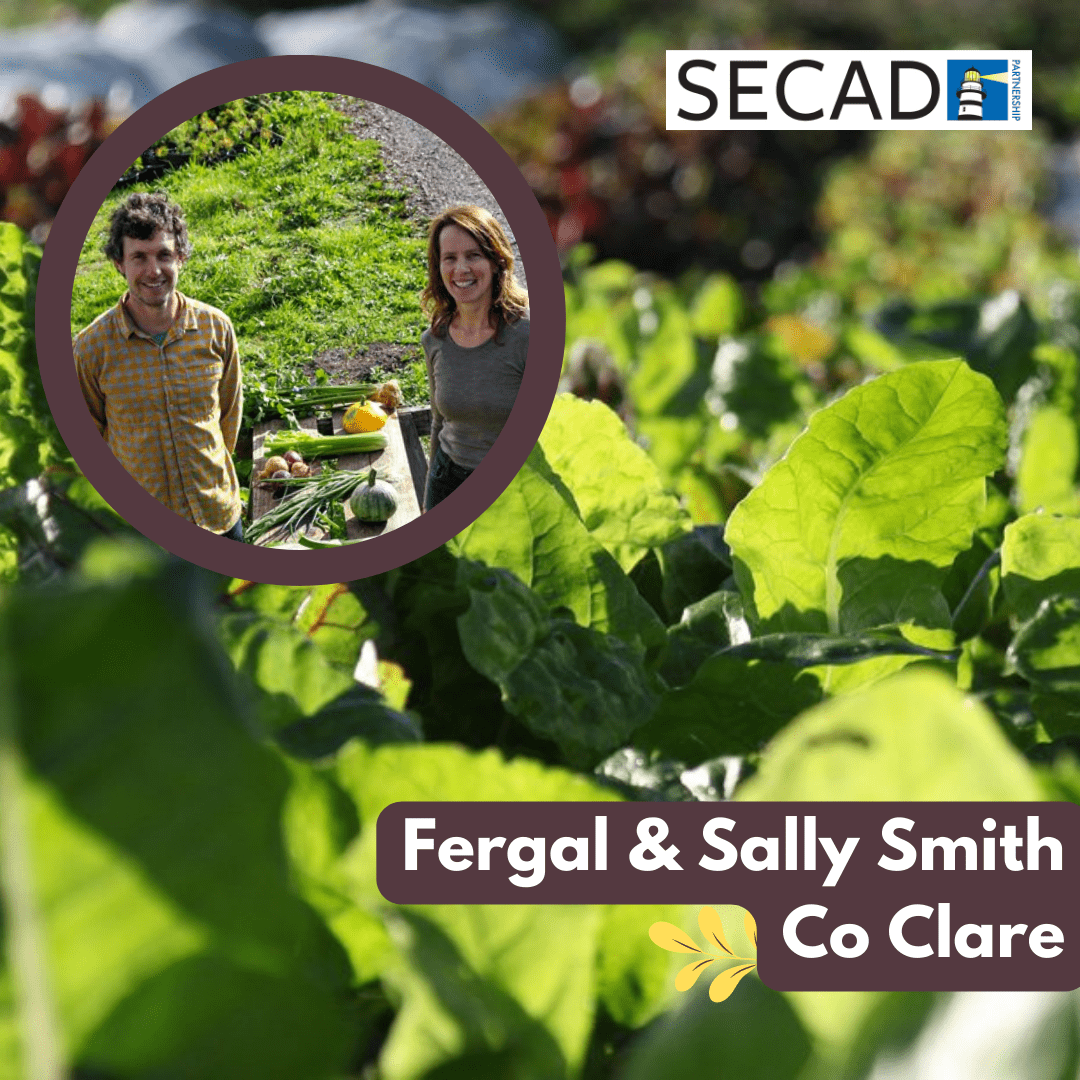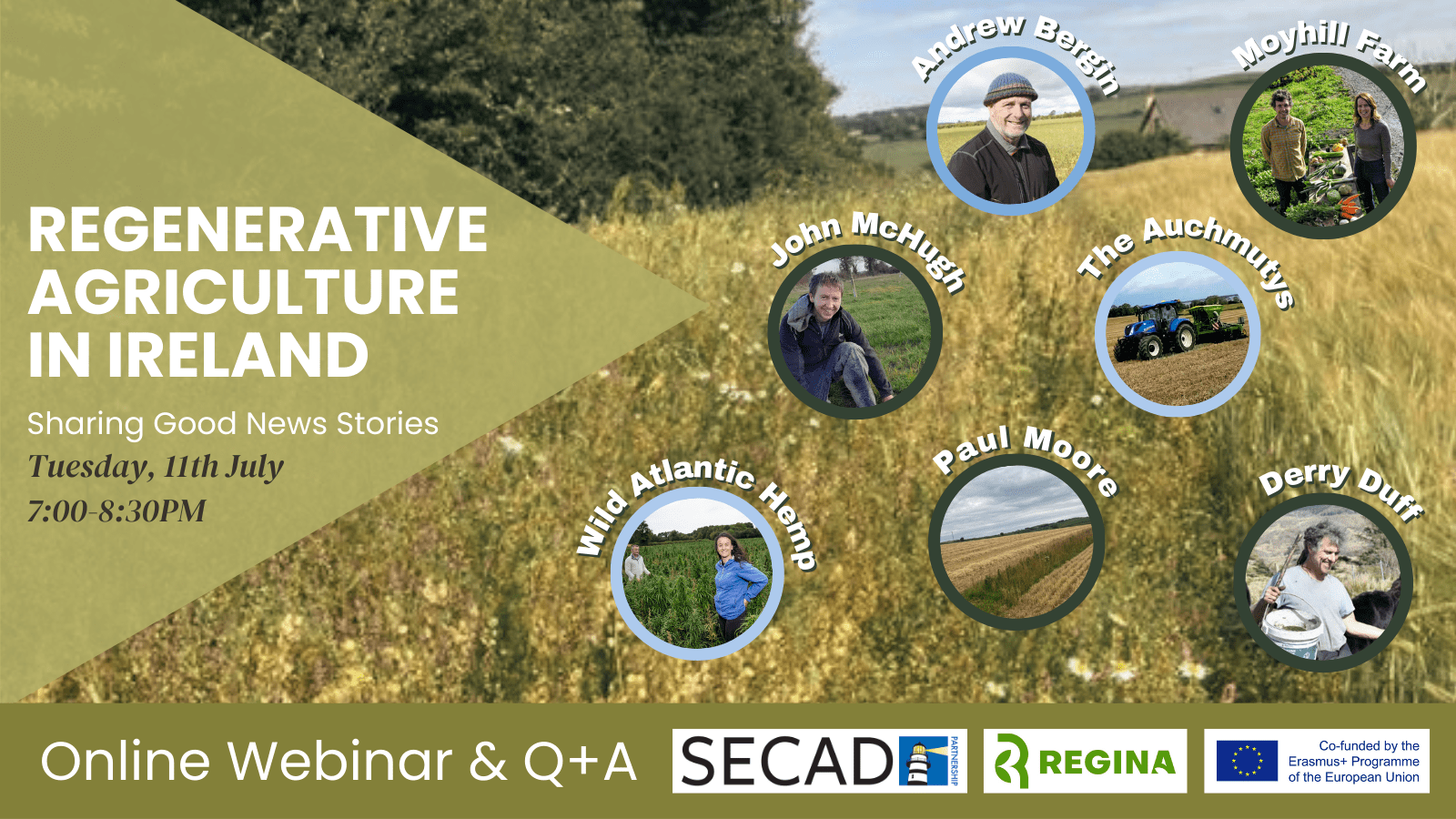Paul Moore, County Cork
Paul Moore is a Tillage farmer near Midleton, Co. Cork. He farms 56 hectares, growing crops such as Malting Barley, Beans and Oilseed Rape, with a small herd of cattle. In 2017, Paul began experimenting with ‘Regenerative Agriculture’ practices to see if it would work for his type of farming, and for his land.
What is Regenerative Agriculture?
While there is no strict definition, Regenerative Agriculture is an umbrella-term for sustainable farming methods that focus on improving soil health and biodiversity, alleviating climate change, improving nutrient cycling, and increasing water quality and availability (Schreefel et al., 2020). This style of farming integrates plants and animals, uses no chemical inputs, and avoids practices that cause long-term damage to soil, such as excessive tillage. Regenerative Agriculture is site-specific, and farmers can implement the practices in ways in which they feel most suit their land, so long as it keeps in line with the overarching ideology (Rhodes, 2017). Many people say that Regenerative Agriculture mimics ‘the old way’ of farming, as it is a less intrusive and intensive way of farming.
About one quarter of Paul Moore’s land is farmed regeneratively, and as he begins to learn the techniques and see improvements, he hopes to transition more of his farmland to Regenerative Agriculture. Regenerative Agriculture Practices that Paul uses include:
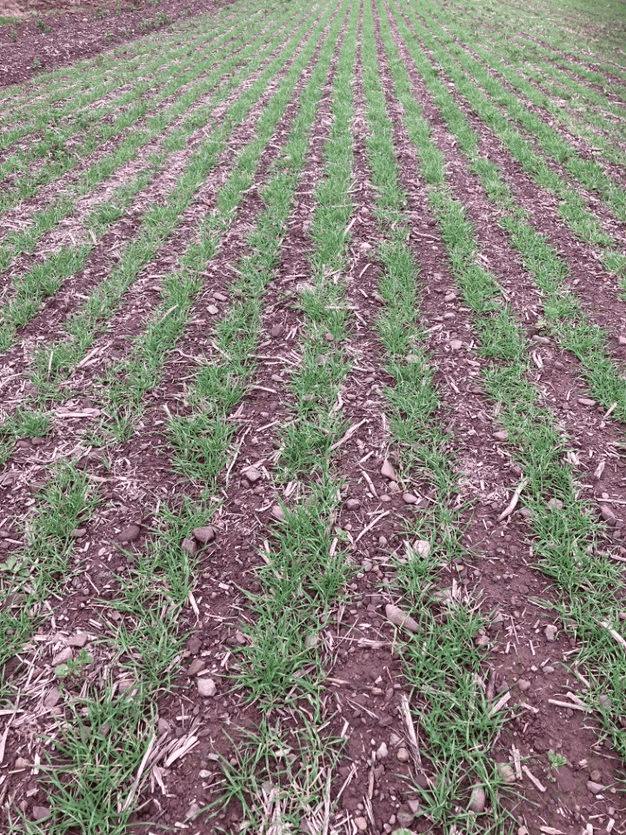
Strip Tilling: Whereby only narrow strips of land are tilled (where the seeds get sown), with the areas in-between left undisturbed. This method improves water drainage and enhances soil health, which can lead to higher crop yields.
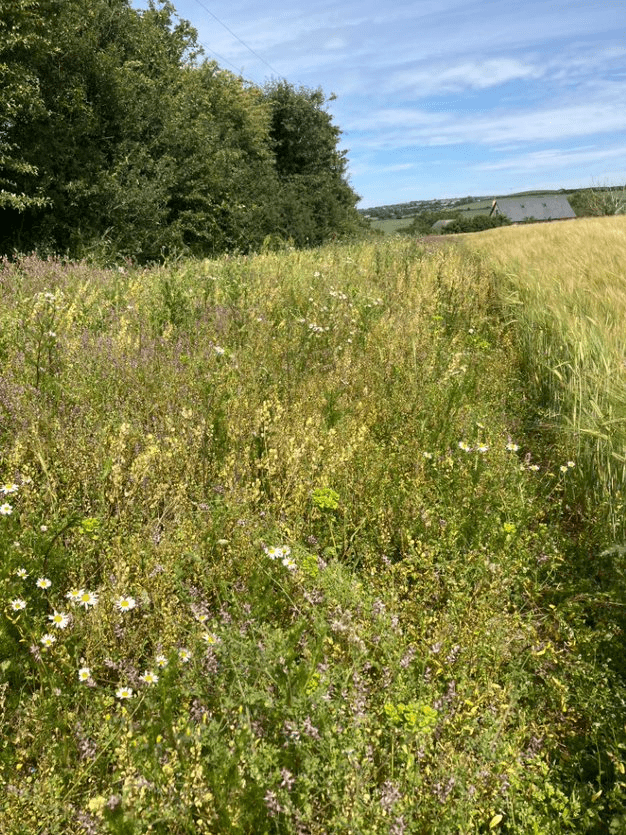
Wildlife Margins: Area surrounding fields that are left uncut for wildlife to flourish unharmed. Native flowers are excellent for the health of our native pollinators and natural biodiversity.
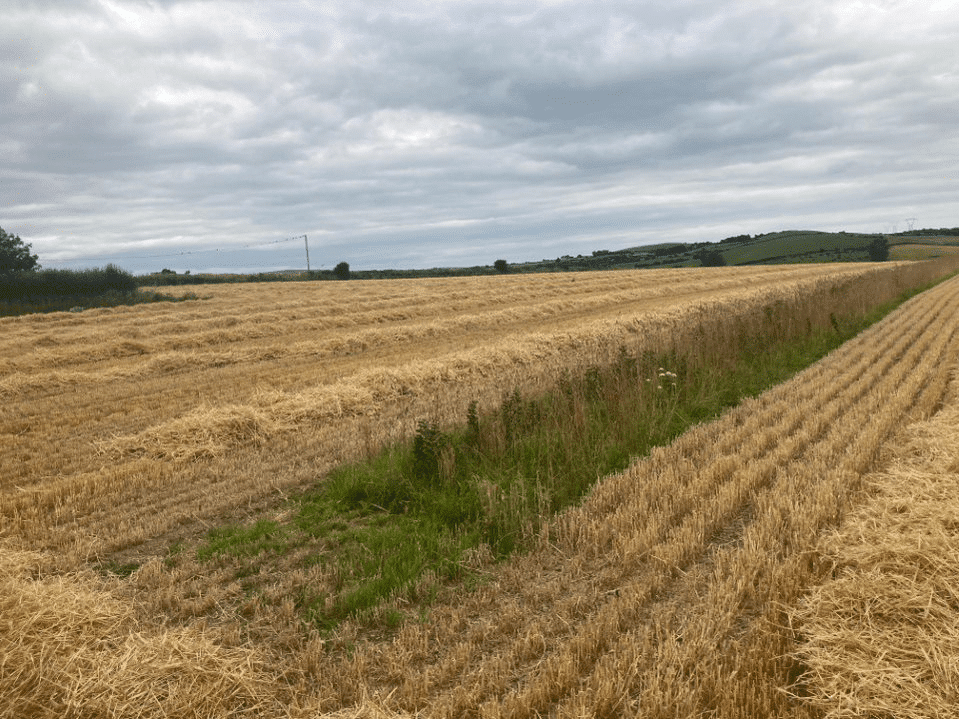
Beetle Banks: These are wide strips of uncut land amongst tillage fields that create habitats for beetles that feed on the pests that attack crops. Natural pesticides, if you will!
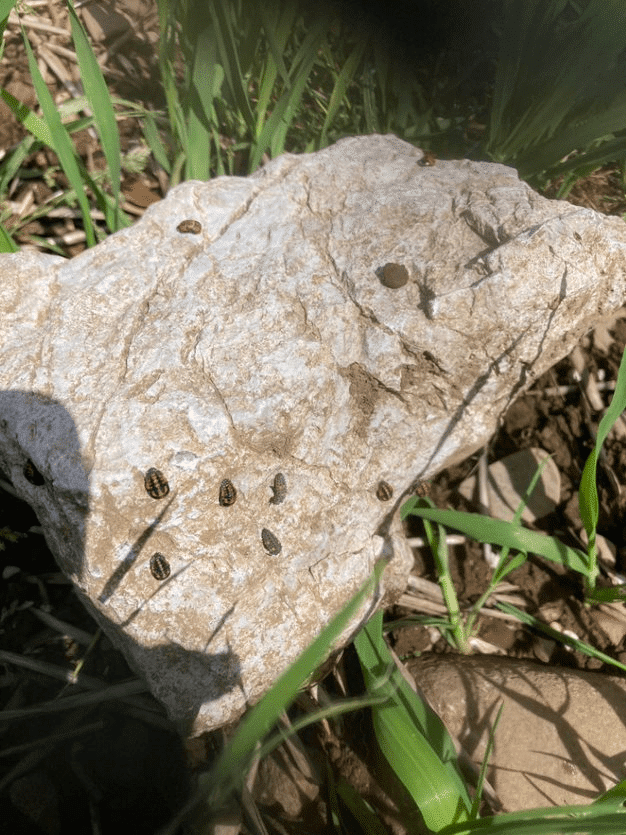
Since starting Regenerative Agriculture practices, Paul has noticed an increased number of “helpful” insects on his land. These insects include Ladybirds and certain Beetles, which are natural predators to the Aphid. Aphids are pests on tillage farms that are usually killed with chemical pesticides. The Aphid population on Paul’s farm is kept low due to the predatory insects. Paul explains that his main issue with using no pesticides is having to deal with slugs! He is currently experimenting with different ways of combatting slugs naturally.
Government schemes such as the old “GLAS” scheme (now evolved to the “ACRES” scheme) have allowed Paul to gain some financial support for the use of cover crops, a regenerative practice. Cover crops ensure that bare soil, which releases carbon into the atmosphere, is covered between harvest and resowing. By covering the soil with plants, photosynthesis absorbs carbon and creates nitrogen to feed the soil and reduce emissions. This process not only increases the health of the soil, but also the quality of the future crops. The longer Regenerative Agriculture is used, the more resilient the ecosystem becomes.
For Paul, the benefits of this style of farming have reduced his workload and input costs. The transition period to Regenerative Agriculture can produce lower yields for a couple years as it takes time to get the soil conditions right for sowing. However, Paul thinks that this should not deter farmers from giving Regenerative Agriculture a try, due to the multitude of benefits (such as high quality soil and crops, improved water drainage, less input costs and reduced labour) that arise from long-term practice. Paul says that Regenerative Agriculture is a slow, yet empowering process. Farmers are empowered to make their own informed decisions, based on their knowledge of their land and the local environment.
References
Rhodes, C.J., 2017. The imperative for regenerative agriculture. Science progress, 100(1), pp.80-129.
Schreefel, L., Schulte, R.P.O., De Boer, I.J.M., Schrijver, A.P. and Van Zanten, H.H.E., 2020. Regenerative agriculture–the soil is the base. Global Food Security, 26, p.100404.

